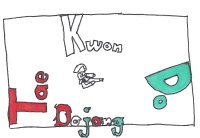The Dojang
Dojang is the Korean word for a formal training hall or practice hall; the literal translation is “house of discipline.” Thus, a TKD school may be referred to as a dojang.
|
The buildings themselves may be different from one another, depending on the space, location and facilities. If you join a club you may practice in a gym or other space that may not be the ideal TKD training room, but it is still a dojang and should be respected as such. |
 |
A traditional Taekwondo dojang includes a training room containing mats (or other padding) and training equipment such as kicking bags, shields, and mirrors for students to watch themselves practice. These are tools for the students to use as the instructor sees fit. A dojang usually has locker rooms or changing rooms where students may put their street clothes. Generally, there is a front desk or reception area for greeting students and guests. The instructors may have offices or meeting rooms. Some clubs offer additional equipment such as weights, pools, and saunas.
 Back Kick, by Kathryn Lichlyter |
In a traditional TKD training area you will see a Korean flag and a flag of the country where the school is located. These flags should be respected by all students. The national flag is hung to respect the homeland of the students; the Korean flag is hung to show respect to the Korean nation, the home of the founders and originators of Taekwondo. |
Most instructors require that students and guests not wear shoes while on the Taekwondo training area floor. Taekwondo training shoes are appropriate.
Check out the rules of your own dojang. We have some of the basic rules of the dojang listed here.
A Taekwondo Class:
Traditionally, students are called to class by the exiting of the students of the previous class, or by the instructor or a senior student calling the class into the training room.
Many classes begin with students lining up by rank, highest to lowest belt, usually going from the instructor’s left to right. The class is called to order by bowing to the flags and to the instructor. This is led by the most senior belt in the class (usually the highest belt other than the instructors themselves). Then the class is led through a warm-up and stretching routine, followed by the training excises for the day. These exercises vary with the class schedule, the abilities of the students, and the instructor’s goals.
At the end of the class, the students line up as they were originally. The class bows again to the flags and the instructor(s) with a "kahm sa hamnida" ("Thank you"). The instructor then dismisses the class.
Responsibilities of the students to the dojang:
Students are expected to help keep the dojang clean by taking care of their personal equipment, their clothing, and any messes they make.
Senior students may be responsible for setting up sparring mats or other equipment for special classes. They may also assist at special functions, such as tests, by setting up tables and chairs for judges and guests.
Have we missed something? Let us know!
Show us your Dojang!
If you want to show your school's facilities to the world, here’s your chance. Take some pictures of your Taekwondo dojang (with your master's permission) and send them to us! We'll show the world how cool your dojang is! (Please let us know the name, location of your school and your instructor's name to give them credit!)
Taekwondo Instructors and Schools: Link your school website to Taekwondo-guide.com as a resource for your students.